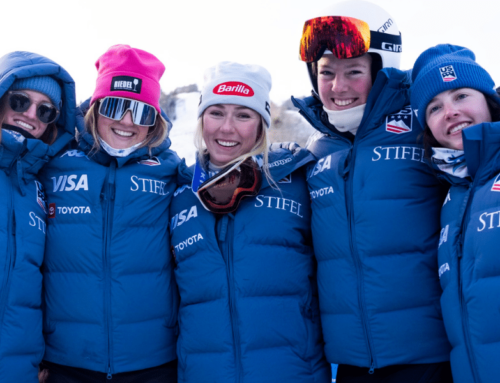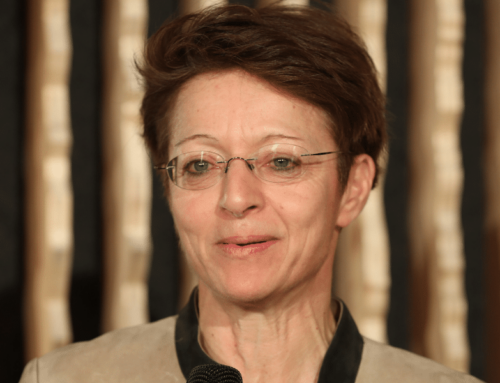Unraveling the Epidemic of World Cup Injuries: Insights and Trends
GEPA pictures
What do Mikaela Shiffrin, Aleksander Aamodt Kilde, Petra Vlhová, Alexis Pinturault, Sofia Goggia, Corinne Suter, Wendy Holdener, Marco Schwarz, and other World Cup ski racers have in common? They all sustained severe injuries that ended their seasons prematurely (except Mikaela, who missed several races due to a knee injury). As my title suggests, the frequency of these season-ending injuries is alarming for the racers and the many fans of the White Circus, who miss seeing their heroes demonstrate power, agility, and courage as they hurtle down the mountains at high speeds. It’s also a significant concern for the national ski federations and the FIS, which want to have the best athletes in our sport competing head-to-head throughout the season.
There have been many theories about what caused the many injuries this season. Everyone is looking to see if there is a trend toward more injuries in recent years. The first question to ask is whether the injuries deviate from the norm. There is a natural tendency to focus on the most recent injuries (because they are easier to remember) rather than remembering past seasons’ injuries, assuming that there have been more this year than in the past. We can only look back on recent years to see if this year has produced an unusual number of serious injuries.
Also, from a statistical perspective, there is no way to tell whether this season’s injuries have occurred at an unusually high frequency, what is called a “statistical aberration” (meaning the high number of injuries just happened randomly), or if a pattern is emerging of a significant increase in injuries due to potentially identifiable reasons.
There has been much speculation about possible causes of the many injuries:
- So many scheduling changes due to bad weather or limited snow have created undue stress on the World Cup athletes.
- An already demanding World Cup race schedule that doesn’t provide sufficient opportunities for training and rest.
- Inadequate snow resulted in rougher and more dangerous course conditions.
- Too many World Cup athletes were trying to race in more disciplines, thus creating increased fatigue and insufficient training in their primary events.
- There are too many media and sponsorship responsibilities.
- The need to post regularly on social media causes distractions.
- The pressure World Cup athletes feel to push their limits to be competitive.
- Or my favorite, “S&%# happens in ski racing!
This rash of injuries is also of significant concern for those professionals who study and look for answers to why injuries occur, how to prevent them, and how to treat them. I’m on a dissertation committee for a German graduate student, Philippe Muller, who will study how to avoid ski racing injuries in young racers. In a recent committee call, members had a fascinating discussion offering psychological explanations for the injuries and suggestions for preventing them. In other words, could a particular type of mental training help prevent injuries?
I provided a somewhat conflicting perspective on the value (or lack thereof) of mental training in injury prevention. In theory, mental tools such as mental imagery, relaxation training, focus training, intensity regulation, emotional management, stress mastery, breathing routines and self-talk, among many others, could better prepare ski racers mentally and physically for the extreme demands of ski racing, thus potentially reducing the risk of injuries. Now, here comes the conflict. Those very same tools are ones that I use with World Cup ski racers to help better prepare their minds and bodies to push their limits and find ways to ski faster. And, of course, with greater risk and higher speeds, more injuries are likely to follow. You see the contradiction here: that which might prevent injury may also cause it.
Preventing Injury Among Young Ski Racers: Lessons Learned from the World Cup
While identifying the causes of this “epidemic” of injuries at the World Cup is purely speculative, I believe that these potential contributors to injury can also make young ski racers more vulnerable to injury as the winter progresses and the race season gets extended. It takes a toll on their minds and bodies. Here are some steps racers can take to keep the hounds of injury at bay:
- Adequate rest and recovery (one day off a week, 3-5 days off as you enter March),
- Proper fueling and hydration off and on the hill (your body can’t stay healthy without sufficient nutrients).
- A consistent physical maintenance program (to minimize the loss of strength).
- A commitment to mental training (consistent mental imagery, adherence to your training and race routine, positive self-talk, meditation).
- Listen to your body and mind (if they tell you to miss a training session or take fewer runs, please get the message).
I can’t guarantee that my “prescriptions” will eliminate the risk of injury. At the same time, I will say with some confidence that racers who follow my suggestions will be healthier, fitter, more motivated, confident, focused, and better prepared to finish the season strong. And in that improved physical and mental state, I believe that the almighty gods of ski racing will look kindly on you and allow you to complete the race season in one piece (of course, one of those gods of ski racing is Loki who gets perverse pleasure out of the pain of us mere mortals).














